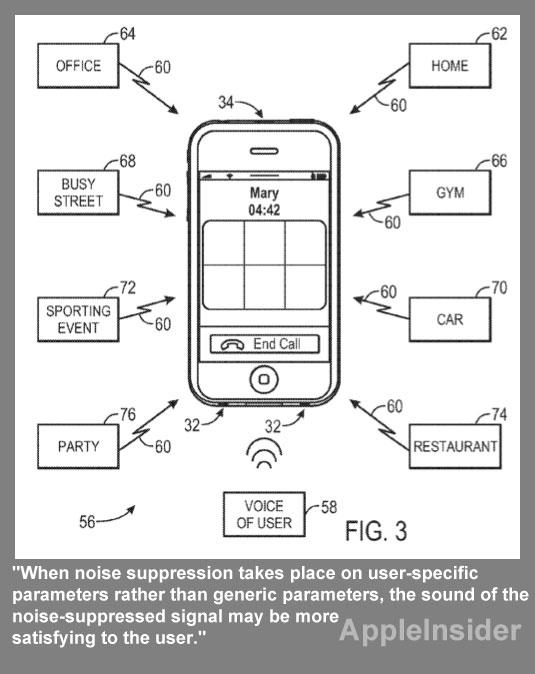Apple is investigating the use of user-specific unique voice recognition technology to improve ambient noise cancellation with devices like the iPhone.
Apple's interest in improved noise cancellation technology was revealed this week in a handful of patent applications discovered by AppleInsider. In all, there were four noise cancellation patent applications published by the U.S. Patent and Trademark Office. They are named:
- User-Specific Noise Suppression for Voice Quality Improvements
- Active Noise Cancellation Decisions in a Portable Audio Device
- User Interface Tone Echo Cancellation
- System and Method for Removing TDMA Audio Noise
While all aim to offer better voice recording technology and improved call quality on mobile devices, the first application in particular relates to implementing voice recognition in noise cancellation. Apple's smart system would adapt to the sound of a particular user's voice to improve noise cancellation.
"Rather than employ generic noise suppression parameters programmed at the manufacture of the device... these user-specific noise suppression parameters may be determined through voice training, based on a voice profile of the user, and/or based on a manually selected user setting," the filing reads.
"When noise suppression takes place on user-specific parameters rather than generic parameters, the sound of the noise-suppressed signal may be more satisfying to the user."
Apple's solution would learn a user's unique voice and pick up on different characteristics, including frequencies and distinct sounds. This would allow noise suppression to operate more effectively.

By recognizing a user's individual and unique voice, the system could not only block out background, ambient noise, but also filter out others in the vicinity who might be speaking. If an unrecognized voice is picked up by an iPhone's microphone, it could be cancelled out by the active system.
Apple even proposes a system that would send the unique noise suppression parameters to a separate iPhone when both are engaged in a phone call. This way, the iPhone could recognize the voice of the person on the other line, and actively block it out if the handset is being used in speakerphone mode.
In addition to the adaptive component of the system, Apple would also allow users to input custom settings to ensure the noise cancellation feature is working to their liking. Apple's filing gives the example of a simplified choice of high, medium and low noise suppression strength options on an iPhone.
The voice recognition configuration could be completed as part of the activation process on an iPhone. This way, as soon as a person begins using the smartphone, it will already have a basic configuration profile in place for advance noise cancellation.
Apple's proposed user-specific noise suppression invention was originally filed with the USPTO in June of 2010. It is credited to Aram Lindahl and Baptiste Pierre Paquier.


